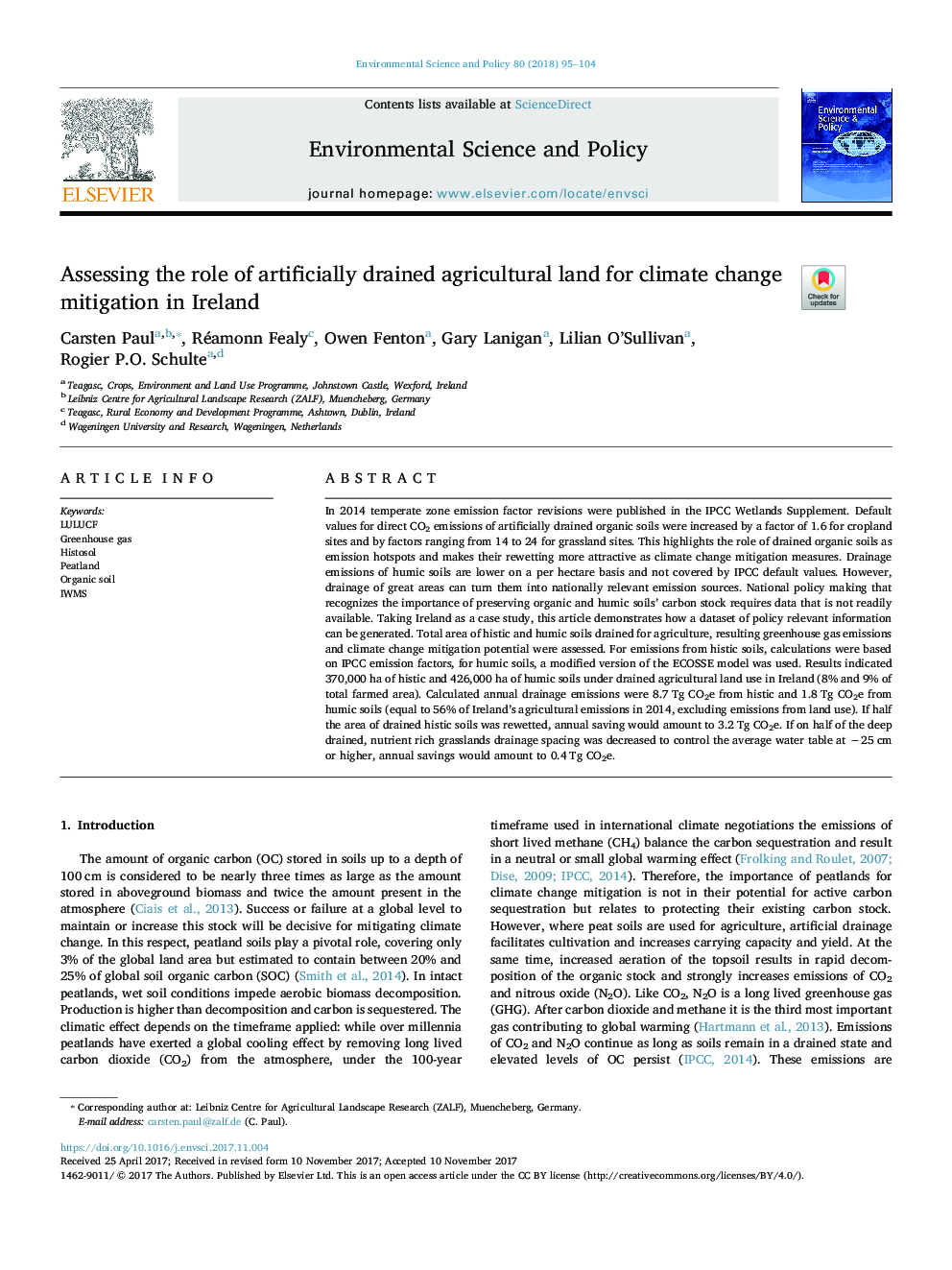| کد مقاله | کد نشریه | سال انتشار | مقاله انگلیسی | نسخه تمام متن |
|---|---|---|---|---|
| 7466301 | 1485028 | 2018 | 10 صفحه PDF | دانلود رایگان |
عنوان انگلیسی مقاله ISI
Assessing the role of artificially drained agricultural land for climate change mitigation in Ireland
ترجمه فارسی عنوان
ارزیابی نقش زمین کشاورزی مصنوعی تخلیه شده برای کاهش تغییرات اقلیمی در ایرلند
دانلود مقاله + سفارش ترجمه
دانلود مقاله ISI انگلیسی
رایگان برای ایرانیان
کلمات کلیدی
موضوعات مرتبط
مهندسی و علوم پایه
مهندسی انرژی
انرژی های تجدید پذیر، توسعه پایدار و محیط زیست
چکیده انگلیسی
In 2014 temperate zone emission factor revisions were published in the IPCC Wetlands Supplement. Default values for direct CO2 emissions of artificially drained organic soils were increased by a factor of 1.6 for cropland sites and by factors ranging from 14 to 24 for grassland sites. This highlights the role of drained organic soils as emission hotspots and makes their rewetting more attractive as climate change mitigation measures. Drainage emissions of humic soils are lower on a per hectare basis and not covered by IPCC default values. However, drainage of great areas can turn them into nationally relevant emission sources. National policy making that recognizes the importance of preserving organic and humic soils' carbon stock requires data that is not readily available. Taking Ireland as a case study, this article demonstrates how a dataset of policy relevant information can be generated. Total area of histic and humic soils drained for agriculture, resulting greenhouse gas emissions and climate change mitigation potential were assessed. For emissions from histic soils, calculations were based on IPCC emission factors, for humic soils, a modified version of the ECOSSE model was used. Results indicated 370,000Â ha of histic and 426,000Â ha of humic soils under drained agricultural land use in Ireland (8% and 9% of total farmed area). Calculated annual drainage emissions were 8.7Â Tg CO2e from histic and 1.8Â Tg CO2e from humic soils (equal to 56% of Ireland's agricultural emissions in 2014, excluding emissions from land use). If half the area of drained histic soils was rewetted, annual saving would amount to 3.2Â Tg CO2e. If on half of the deep drained, nutrient rich grasslands drainage spacing was decreased to control the average water table at â25Â cm or higher, annual savings would amount to 0.4Â Tg CO2e.
ناشر
Database: Elsevier - ScienceDirect (ساینس دایرکت)
Journal: Environmental Science & Policy - Volume 80, February 2018, Pages 95-104
Journal: Environmental Science & Policy - Volume 80, February 2018, Pages 95-104
نویسندگان
Carsten Paul, Réamonn Fealy, Owen Fenton, Gary Lanigan, Lilian O'Sullivan, Rogier P.O. Schulte,
